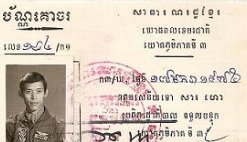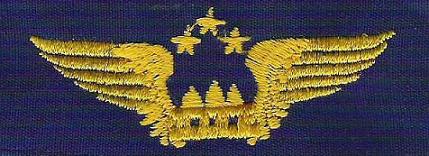 |
| Home | AVRK | AVNK | KAF | Links |
L'Aviation Nationale Khmère
1970
During Sihanouk’s long stay in France, the incidents between the Cambodian population and Vietcong troops multiplied in Cambodia. There were also skirmishes between Vietcong and Cambodian troops. In the provinces and in Phnom Penh, protest demonstrations against North Vietnam took place. An ultimatum was given to the Vietcong and North Vietnam ordering them to leave Cambodia. Despite a request from the government, Prince Sihanouk still doesn’t return from France. The events had moved fast.
On
March 18, 1970 the national assembly voted the destitution of Sihanouk
with an absolute majority and entrusted power to the Prime Minister Lon
Nol and deputy Prime Minister, Prince Sisowath Sirik Matak.
In
the Army, officers loyal to Sihanouk were considered as dangerous. They
were put under tight surveillance, while some of them were arrested.
Other officers belonging to the royal family found their situation
very delicate with the atmosphere of distrust reigning among the
echelons of commandment. Little by little this distrust was diminished,
but not completely.
As for the Aviation, Colonel Keu Pau Ann was removed from his function of AVRK Chief of staff and assigned to the General Headquarters. His deputy, Major So Satto, promoted to the rank of Lieutenant Colonel, replaced him. The attached document shows the rank of Aviation officers, at the time, they still reported somehow to the Army. Major Penn Randa became the deputy Tactical Chief of Staff and Major Ea Chong, deputy Chief of Staff for the logistics. The 'Aviation Royale Khmère' became 'Aviation Nationale Khmère'.
The
war against the communist Vietcong and Khmer Rouge became unavoidable.
Right after March 18, 1970 the North Vietnamese troops launched an
all-out offensive in the remote north-east provinces. At Labansiek, in Rattanakiri
Province, after less than three months, the airfield was shelled by the enemy artillery every time
our C-47s landed. Three paratroop battalions, under Major Oum Savuth
command, including women and children, had no choice but to break
through the encirclement to South Viet Nam. The USAF provided fire
support and dropped supplies along this exodus.
The
North Vietnamese army was already present in the two provinces of
Rattanakiri and Mondulkiri from the time Sihanouk authorized them to
install their sanctuaries along the borders. All villages and districts
fell into communist hands after ten days of fighting. Under the enemy
bombings, all air strips in that region became unusable. Our troops
received their supplies only by air drops. This was not enough to save
them (see notes).
|
In order to destroy the communist sanctuaries, more than 40’000 South Vietnamese and Americans troops invaded eastern Cambodia. Driven away from their sanctuaries, the communist went deep into Cambodia attacking the provinces of Svay Rieng, Prey Veng, Takeo, Kampot, and Kampong Speu. All
pilots detached to Royal Air Cambodge were called back to military
duties in the Aviation Nationale. Despite the shortage of spare parts
and ammunition, we managed to make the unique
Intervention Group efficiently operational with the available assets.
The training jets Fouga Magister CM-170s were then equipped with 50 kg
French light bombs. Even the T-37s, exclusively dedicated for training,
participated in combats along with T-28s, the MiGs and the few
operational A-1Ds. The operational status of the MiGs, however, quickly
declined by the shortage of spare parts and ammunition stock that the
Communist countries did not deliver anymore. With the poor condition of
the many ex-AVRK planes, the technicians had to do odd jobs day and
night to keep them operational. Meanwhile, with the help from a USAF
technical team, our Mig-17s were adapted to carry the American MK-82
bombs of 500 pounds. Later on, they replaced the original Soviet guns
with the American 50 Cal machine guns.
Thanks to www.Itnsources we can see a 1970 video of the MIG-17s returning from missions and an interview of Penn Randa.
> Go to the Link page |
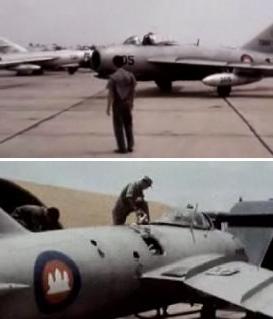 |
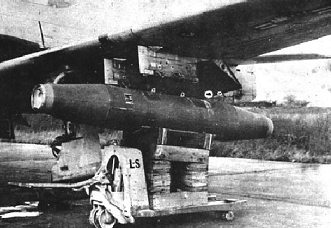 |
At
the beginning of the war, the equipment delivered by the technical
department of the US Army Aviation were not always adequate. Later on,
the USAF technical department took over the delivery. As far as the
French military mission was concerned, it ceased all support and
assistance since the first day of the Khmer Republic. Following orders
from Paris, General Viel, chief of the military mission,
interdicted French pilots from flying Khmer airplanes. Technical
collaboration also ceased. Nevertheless, we kept the French procedures
and French was still used at the Air Academy. Two French pilots, Captain Lemoine and former French Air Force Major André Rama continued to fly "privately" with us. They become officiously "part time" pilot instructors at Pochentong Air Base during these crucial several weeks period. < Home made emergency tools. Ammunitions were quickly delivered by the USA but the material support did not come with...(photo transmis par D.Var) |
From
March to December 1970, notably during the 'Chenla I' Operations
starting in August to retake Taing Kauk, our CM-170s, T-28s, MiGs and
all the repaired aircrafts accomplished nearly 3 000 missions. In the
swamp region of Vihear Sour, located on the left bank of Mekong River,
in front of the capital Phnom Penh, the Khmer Rouge put strong
pressures to the government defense units. The air support to the
troops in contact with the enemy were very delicate. Our L-19/FAC
(Forward Air Controller) kept direct radio-communication with friendly
troops to obtain the targets they forwarded to the T-28s, and they
marked those targets with their smoke-rockets for the T-28s to strike.
Often, observation pilots were like spectators watching a tragedy
powerlessly. Seeing enemies encircling, then assaulting and
overpowering a friendly post was unbearable. Some could not sit
idle. At Saang, some FAC pilots took baskets of hand grenades
when the fights were close, and no available air supports was at hand.
Their observers in the back seat throw the grenades to the attacking
Vietnamese communists during low level passes.
During this beginning of the war, Lt Sisowath Samyl Monipong (the
son of Prince Sisowath Monipong, one of the first Khmer pilots) was
seriously wounded on a C-47 while dropping foods and ammunitions to ground troops
at the island in front of Kratié. The crew managed to trick the
communists and to bring the plane back with the remaining engine (see story).
Lt Ros Sourabon's T-28 was shot at Prek Po. With the
night falling down, it was not possible to rescue him. In the morning,
we found his body beheaded. This is the kind of "fate" for the airmen
when they felt into the hands of the Khmers Rouge. During an air support mission at
Phnom Srang in the province of Kompong Speu, Major Neang Lee, leader of
a T-28 group was shot down. He made an emergency landing, crashing his
plane at Tram Knar. He went safe but he had to threaten a menacing
peasant group with a AK-47 he brought and telling them they will be shot by the
other planes if they get closer to him. Fortunately, he was quickly
rescued by helicopters. In the countryside, some peasants were
Sihanoukists, some might be communists but many were obliged to
collaborate with the communists so they could live safe.
Again, at Vihear Sour, we lost two UH-1H helicopters during their supply and sanitary missions. 2nd/Lieutenant Pen Samphie and 1st/Lieutenant Son Sann and all crew members were killed (we apologize we do not have the names of the crew members). Severely damage by enemy fire, Lieutenant Uon Lunn Chhik's helicopter successfully made a crash landing. Rescue helicopters managed to pick up all the crew members. With the heavy fight, the intelligence reports of G2 stated that the population had by force now completely evacuated the border regions. With the corroboration from the Americans who had become friends, the AVNK proposed "free hunting" operations zones. Leaflets were dropped to warn the few remaining peasants to leave the area. Beside the pre-planned strikes, all warplanes coming from their mission or over-flying the region got the authorization to strike at everything that moved, including buffalo carts, cyclists, and boats... South Vietnamese AC-47 Gunships provided support during day time and American AC-130 gunships took over during the night. After one month, government troops had totally controlled the region. The "free hunting" operations cut all the Khmer Rouge supply.
Elsewhere,
our
losses continued. At Roulos, in the province of Kompong Thom, Major Ma
Kim Oeurn's T-28 was shot down during a strafing. He was rescued by
South Vietnamese helicopters. Lt Kong Kreung was shot in the same
province. Some Army troops have pushed the enemy lines to reach him and
rescue helicopters brought the pilot to Phnom-Penh. Severely burned, he
was immediately transferred to a U.S. Hospital in South-Vietnam. He died shortly
after.
Additional crashes and emergency
landing took place. It was the beginning of a long list of material and
human losses. Other pilots like Major Baley, operation officer of
Pochentong AB, were simply fortunate. His cargo plane was hit by ground
fire during an ammunitions drop at Pong Tuk (Kampot) but none of the
crew member was injured.
When
the enemy’s fires came from historic sites, we abstain from firing
back. The Ponhea Leu church that belongs to one the oldest Catholic
community in Cambodia or the Angkor Wat's temples were some of the
monuments the Vietcong used to shoot at our airplanes. In Siem
Reap, they put heavy guns on the Mount Bakheng temple. The plane of the
Minister of Health was targeted when landing and other aircraft were
hit by bullets when flying over the area.
The communists did not
hesitate to get into the Khmer and Vietnamese villages to launch
rockets or to shell government troops. Naturally, the
population fled. When ground troops retaliate or indicate the
coordinates for an air strike, villagers are sometimes unfortunately
already back and the communists are gone. This was
especially true at the beginning of the war when the population had not
yet understand the communists trick
The war was accelerating. Parallel to the new organization, new rules were established for the daily life in an Air Base. (See notes)
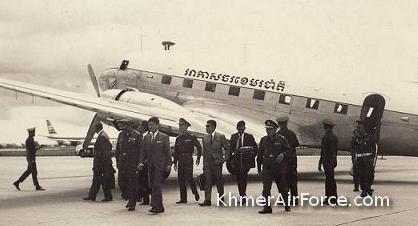
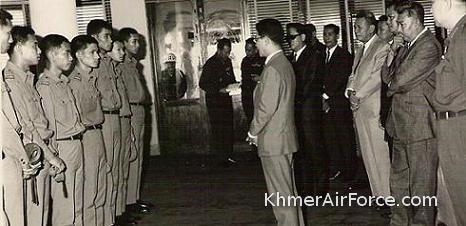
Military cooperation with Thailand. Some of the Khmer pilots trained in Thailand. In fact, Thai aids was financed by the USA.
In the middle of 1970, to avoid disrupting the increasing activities of Pochentong AB and to fulfill the training programs, it was decided that the Air Academy must be moved to Battambang. Lt Col Vatvani, director of the Academy, organized a road convoy for all the technical equipment. It was not without risks as most of the roads were not safe any more. Pilot instructors conveyed the GY-80 Horizon trainers to the new base. Later on, the Air Academy received the T-41D Mescalero. Two years later, owing to his critics on the Lon Nol government, Lt Col Vatvani was removed from command of the Air Academy and replaced by his deputy, Lt-Col Om Traluk (See AFB Commanders list)
|
AFB 201
|
1970 Class Eight
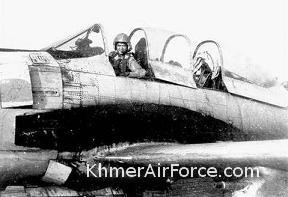 You Chamroeun |
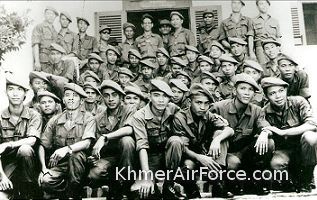 Some of the Class 8A cadets |
In the whole country,
there were very few pilots and navigators. Altogether, they were in
fact less than a hundred and forty; including the management and the headquarters staff. They had to hold the lines until
reinforcements arrived. Urgently, several recruitment sessions were
organized in 1970 with the hope that the new cadets could be
operational in 1971. There were thus Classes 8A then 8B and the
'General Services' Class.
1971
Nonetheless,
the overall operational capability of the AVNK increased considerably.
Unfortunately, on the night of January 21st, 1971, North Vietnamese commandos managed to slip past the defensive belt of
the RMS (the Special Military Region) of Phnom Penh, and attacked
Pochentong Air Base. Once on the Tarmac and the Parking, the communist
sappers easily get rid off guards. The sentries were poorly equipped
with sticks, knife and a few with nearly useless World War II vintage
action-bolt MAS36 rifles. More than twenty guards were killed. In the
hand-to-hand fight, some were overpowered with a single stick in the
hands. Lt Mann Monin was found dead with his stained blood dagger beside
him; he had been finished off with a burst of assault rifle. (see additional notes)
During
these first ten months of war the lack of weapons was such that more
than two third of the rifles belonging to the security troops of the
AVNK had been turned over to the Army units of the RMS (Région Militaire Spéciale) defending
Phnom Penh. Instead, at their place, were distributed daggers and even
clubs to our guards and mechanics. The number of casualties reached
over 200, including some 40 killed, during the North Vietnamese attack
on the base, the victims being military and civilian alike. Most of the
aircraft based at Pochentong were destroyed. However, some transport
planes could be repaired and returned quickly into operational service.
The T-28s deployed at Battambang fortunately escaped the destruction. (see additional notes)
Accordingly, Col So Satto requested an urgent aid from the United States to rebuild the badly hit squadrons as well as additional equipment, logistical support, and aircraft to further expand the AVNK. He specifically requested some F-5As to replace the destroyed MiGs. Instead, Washington offered in exchange some F-86Fs on the verge of retirement from the Royal Thai Air Force. An AVNK technical team went to Thailand to inspect the airframes and found them in very bad shape; the proposal was rejected by the Cambodians. In order to speed up the AVNK rebuilding, some 16 T-28s, UH-1H helicopters, as well as two AC-47 gunships were delivered in urgency. They were followed by a dozen more aircraft in the following weeks.
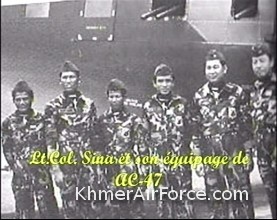 Lt Col Pao Lim Sina was the first pilot qualified on the AC-47D as the commander of the new Gunship Squadron that being set up. His men took to the air every night to attack enemy target or defend friendly ground positions. Their call sign, "Loup Garou" or Werewolf in French, soon became famous. "Loup Garou 009" was one of them... |
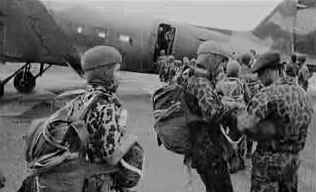 Exercises with the paratroopers. In fact, the new equipment brought in some changes in our doctrine of use and methods of operations. For example, we never carried out afterwards of airborne-parachute dropping operations. Well seasoned and trained since the French period, our paratroopers, however, would be at the spear, and paid a heavy price. Not only during the new heliborne operations that saw considerable development throughout the war, but in the war itself. |
(Photo tansmis par Darasy) Mechanics were making the impossible possible. |
After the attack of Pochentong, American advisers strengthen their teams. The equipment deliveries were supervised by US advisers from the Military Equipment Delivery Team (MEDTC). They were sometimes helped in their task by other personnel from the LAMAT (Logistics Management Assistance Team) or from Air America. All of these technicians arrived in Pochentong after the devastating attack on the airbase. They kept in low profile, usually always in civilian clothes, they performed only instructional and technical works on the ground.
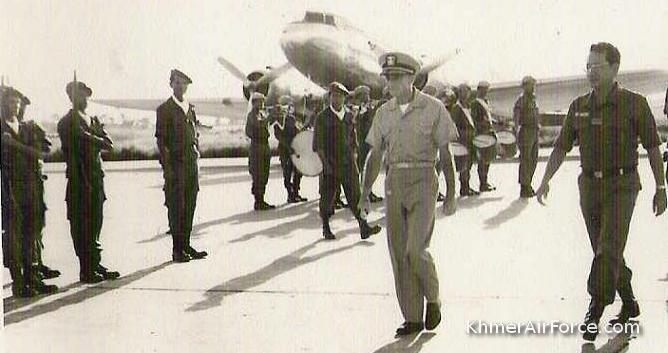 >>>
>>>
Visit of Admiral McCain, Commander of the Pacific Command.
With
a growing number of aircraft, personnel, and an overall expansion of
its structures, an official decree, the Kret of 8 June 1971,
promulgated the new Khmer Air Force (KAF) at the place of the
former AVNK. The change was not only cosmetic in name. It means a new
organizational structure and the emergence of a new independent branch
of the Khmer military forces.
